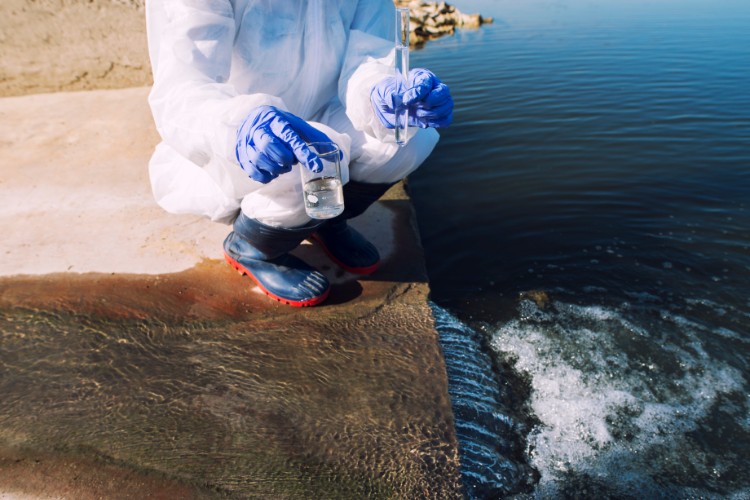Water Disinfection: What Really Works?
Introduction: What’s Really in Your Glass?
Let’s get real—your tap water might sparkle, but that doesn’t make it safe to drink. Most water starts dirty. We're talking microbes, grime, and hidden toxins. That’s why water disinfection is the unsung hero of modern living.
At Shandong Shine, we take this job seriously. We manufacture the Shine Sodium Hypochlorite Generator, a system that helps remove pathogens and protect public health.
If you've ever wondered what is disinfection process in water treatment, you’re in for a wild but eye-opening ride.
Secondary Heading 1: Why Disinfection Matters More Than Ever
🦠 Bacteria and Viruses Are Ruthless
Even one drop of untreated water can carry dangerous organisms.
· E. coli
· Norovirus
· Giardia
· Cryptosporidium
These can all make you sick—or worse. Disinfecting water isn’t optional. It’s survival.
🏘️️ Your Water Supply Isn’t a Magic Spring
Rainwater picks up pollutants. Groundwater flows through contaminated soil. Even after reverse osmosis, treated water still needs disinfection to eliminate what's left. That’s where the final barrier—effective disinfection—comes in.
🛑 EPA Demands Safe Drinking Water
The Environmental Protection Agency (EPA) mandates strict disinfection standards. If your water utility doesn’t meet these rules, they can’t legally deliver water to your tap.
Secondary Heading 2: What Is Disinfection Process in Water Treatment?
💧 Step-by-Step Disinfection Rundown
Here’s how most water treatment systems work:
1. Coagulation & Flocculation – Combines particles into large clumps
2. Sedimentation – Heavy particles sink to the bottom
3. Filtration – Removes suspended solids and sludge
4. Disinfection – Destroys microorganisms
5. Distribution – Sends water to homes and businesses
We focus on step four. It’s where you win—or lose—the fight against waterborne illness.
🛠️️ Disinfection Methods That Get the Job Done
These common methods wipe out germs and keep your water safe:
· Chlorination
· UV Light
· Chlorine Dioxide
· Ozonation
Most treatment facilities use at least one of these, and some use a combo.
Secondary Heading 3: The Three Titans of Disinfection
💥 Chlorination (Including Our Shine System)
Disinfection methods include chlorination for good reason. It’s cheap, powerful, and easy to apply. It reacts with microbes, cracking their cell walls like bubble wrap.
We developed the Shine Sodium Hypochlorite Generator to take this further. It makes sodium hypochlorite on-site, using only salt and power.
✅ No transport
✅ No dangerous storage
✅ No guesswork
💡 UV Light: The Chemical-Free Warrior
UV light zaps bacteria and viruses with electromagnetic waves. No taste. No chemicals. Just energy.
The downside? No residual effect. Once water leaves the UV unit, it’s vulnerable again.
🧪 Chlorine Dioxide: The Specialist
Chlorine dioxide penetrates biofilms and treats both bacteria and viruses effectively.
It also resists pH shifts, making it a flexible option for tricky water conditions.
⚠️ But it needs precise control and comes with a higher cost tag.
Secondary Heading 4: Why Our Shine Generator Hits Different
🔄 On-Site Production Is the Future
We’re not fans of storing chlorine drums. Too risky. That’s why we built the Shine Sodium Hypochlorite Generator to do it all right where the water is.
1. Mix salt and water
2. Apply electricity
3. Boom—fresh disinfectant in minutes
No transport. No hazardous fumes. Just a safe drinking water solution that scales with your system.
📊 Case Study Snapshot
A city in southern China swapped their chlorine tanks for our system.
Result?
· Waterborne illnesses dropped by 27% in one year
· Operating costs fell 15%
· Public trust soared
That’s not marketing fluff—that’s real progress.
Secondary Heading 5: Choosing the Right Disinfection Method
🎯 Factors You Must Consider
No single method fits every system. Look at:
· Water source (surface vs. groundwater)
· Contaminant levels
· Regulatory limits
· Budget and staff capacity
The treatment processes you choose affect every drop your community drinks.
📈 Mix and Match for Better Results
Some systems pair UV light with chlorination for double protection. Others go all-in with chlorine dioxide for biofilm-heavy water.
We often recommend blending common methods depending on your water chemistry and system size.
The Fun Twist: Taste Test Time
Let’s talk flavor.
Yes—disinfecting water changes its taste. Chlorine can leave a swimming-pool vibe if overused. UV systems? Taste-neutral but no pipe protection.
Our solution?
💡 Automated dosing that keeps chlorine levels within EPA-approved taste limits.
So your water stays both safe to drink and enjoyable.
Conclusion: Don’t Gamble With Public Health
Disinfection isn’t a box to check—it’s your shield. When you cut corners, people get sick. We’ve seen it firsthand.
That’s why we built the Shine Sodium Hypochlorite Generator—to arm you with a dependable, modern tool in the war against contaminants.
With the right system, your water to kill germs can become water that heals, hydrates, and protects.
Ready to rethink your water treatment systems? We’re just a message away.
References
1. EPA Drinking Water Requirements
2. WHO Water Quality Guidelines

